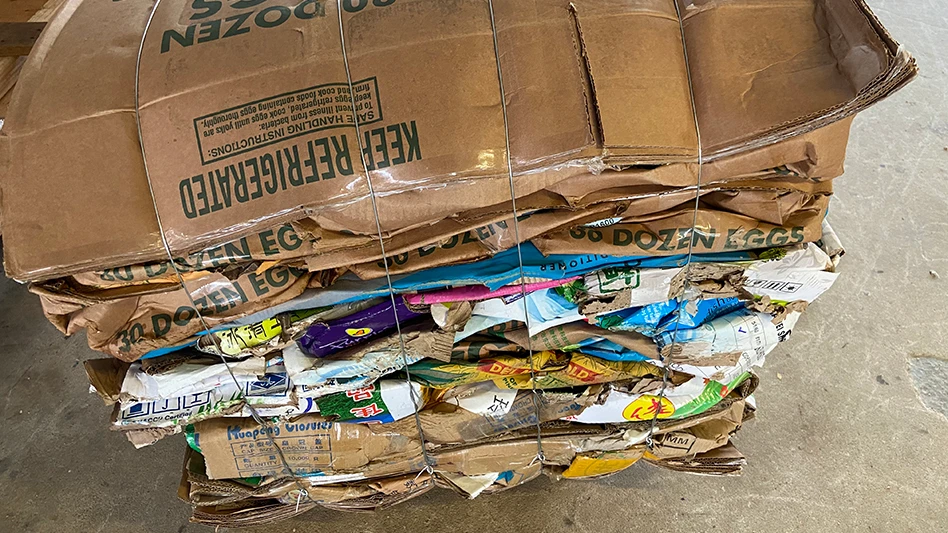
Recycling Today archives
The growing production of containerboard and other packaging grades in parts of Asia seems poised to provide a home for imported recovered fiber the rest of this decade, according to presenters at the recent Bureau of International Recycling (BIR) World Recycling Convention and Exhibition. The fall 2023 version of the event took place in Abu Dhabi, United Arab Emirates, in late October.Ranjit Baxi, managing director of London-based J&H Sales International and a longtime BIR volunteer officer, told attendees of the BIR Paper Division meeting the Indian market had considerable growth prospects as a consumer of recovered paper.
“Demand for recovered fiber in India will grow first and foremost because of e-commerce,” Baxi told delegates.
An expected 300 million people in India will be transacting e-commerce business by 2025, Baxi said, pointing to an increase in paperboard packaging demand. Capacity at Indian paper mills, of which there are roughly 750, is projected to grow from 14 million metric tons to more than 20 million metric tons by 2030.
“The good news for us is that 75 percent of Indian paper mills are totally dependent on recovered fiber,” Baxi said, adding that nearly 30 percent of domestic fiber consumed in India is domestic, and it imports around 12 million tons of old corrugated containers (OCC) and other grades annually.
Considering exports of paper grades to India during the last 18 months, Baxi called 2023 a “roller coaster ride,” with prices falling 50 percent from a recent peak.
“Volatility in fiber prices and sea freight costs are becoming more and more important for paper mills to decide which region and which supplier to buy from,” Baxi said, noting last year, sea freight to India was around $1,400 per container, but this fall was nearer $700, “It is helping to tell us that the market now is more stable. The volatility phase is over.”
Discussing the Middle East, Atul Kaul, director of pulp and paper at Waraq in Saudi Arabia, said the region produces 4 million metric tons of recycled-content containerboard, and “every mill is expanding, and every mill needs more quality [recovered] paper.”
Nonetheless, recovered paper was being shipped out of the region to Southeast Asia because of demand there. Kaul said mill efficiency would be critical in the future and that “only the best will survive, and the weak will close down."
Simone Scaramuzzi, sales and purchasing director at LCI Srl in Italy, said in Europe mills were not working fully and buying only what was necessary in terms of recovered fiber.
Scaramuzzi cited a drop in e-commerce and consumer demand as factors, saying energy costs are now around prepandemic levels, but collection levels had fallen from 25 percent to 30 percent.
“We are now exporting more than selling to local mills,” he said. Shipping costs had fallen, but Scaramuzzi did not anticipate any market improvement this year.
In his remarks, Baxi also addressed the emergence of artificial intelligence (AI) and carbon credits as influences on the future of the paper recycling sector.
He said the sector should harness the power of AI to improve quality, efficiency and costs, as well as verifying “green” audit trails. He also challenged the sector to focus on the creation of a global carbon credit system whereby recyclers of paperboard and other materials would be financially rewarded for their role in reducing CO2 emissions as part of the drive to net zero.
Baxi identified five key factors that he said determine successful global trade: logistics costs, currency volatility, economic outlook, demand and quality control. With parts of the world developing local collections, he believes exporting lower grades of recovered paper would, by 2030, be “a no-go area,” and more fiber would end up in energy recovery.
On the processing side, Baxi said improving quality and efficiency in sorting plants will be key in the coming years, adding that AI, robotics and optical sorters are helping to achieve this.
Earning carbon credits by recycling paper and other materials could bring in from $1 billion to $2 billion for stakeholders across the global recycling chain, he calculated. “We are supplying 240 million metric tons of recovered fiber to generate about 430 million metric tons of new paper across the world," he said. "That 240 million tons can be, should be, and must be part of the voluntary carbon credits system.”
Latest from Recycling Today
- BMW Group, Encory launch 'direct recycling’ of batteries
- Loom Carbon, RTI International partner to scale textile recycling technology
- Goodwill Industries of West Michigan, American Glass Mosaics partner to divert glass from landfill
- CARI forms federal advocacy partnership
- Monthly packaging papers shipments down in November
- STEEL Act aims to enhance trade enforcement to prevent dumping of steel in the US
- San Francisco schools introduce compostable lunch trays
- Aduro graduates from Shell GameChanger program





